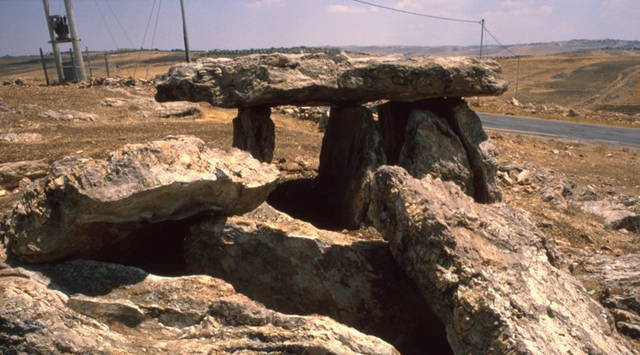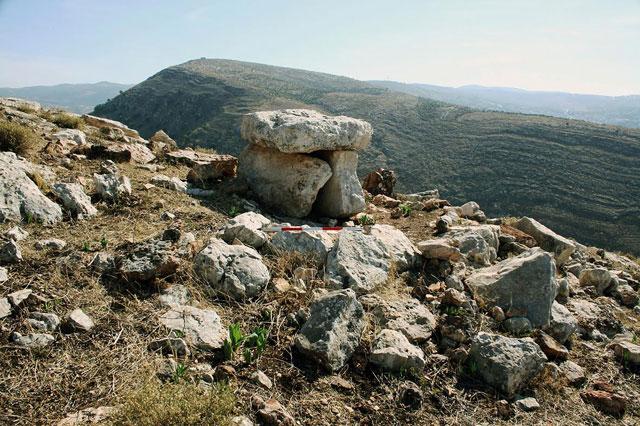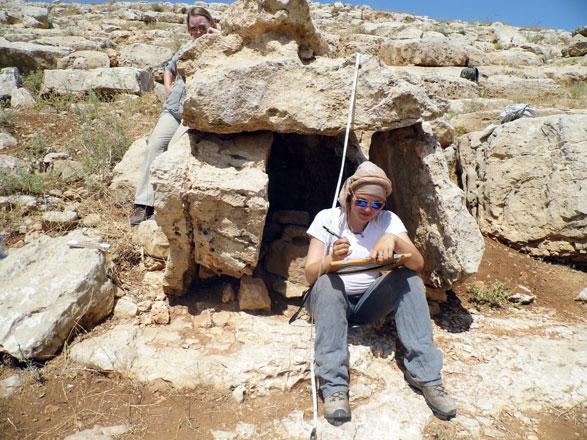You are here
Initiative seeks to revive glory of Jordan’s dolmens
By Maria Weldali - Jun 21,2020 - Last updated at Jun 21,2020

An ancient stone structure in the Murayghat area, near Madaba (Photo courtesy of Abdulraheem Arjan)
AMMAN — Having survived thousands of years to tell stories about the Kingdom’s early societies, Jordan’s Late Bronze Age dolmens (upright stone structures) have now fallen into a state of neglect, according to the founder of initiative to protect these ancient structures.
The dolmens, which date back to 5,000 years, are among the oldest communal constructions in Jordan, situated in 13 different locations across the Kingdom, said Abdulraheem Arjan, photographer and founder of the Dolmens Protection Initiative.
Each dolmen is comprised of a large capstone that rests on at least two upright stones, forming a “tremendous monument that illustrates the development of early communal life”, the photographer told The Jordan Times on Tuesday.
Arjan, who is also an archaeological researcher, noted that in 2011 when he first started the initiative, only a handful of people were interested in exposing “the true identity of one of Jordan’s historical sites”.
For this reason, he said, he worked to incorporate the dolmens into the national and international tourism map, in addition to familiarising the public and citizens with the historical significance of the dolmens through media, social media platforms and field visits.
The dolmens are located in the Murayghat area and in Damia, Faihaa, Sukhnah, Birayn, Jordan Street and Deir Alla, Arjan said.
“The Kingdom’s dolmens carry an endless list of myths and theories”, he said. Some of these legends claim that they were the houses of goblins and ogres. According to other beliefs, the dolmens were used as signs on trade routes.
It is more likely, he said, that the above-ground chambers were used as burial sites for the elite.
“On the capstones there are many holes, all of which refer to galaxies, the position of the stars and planets, creating some sort of star maps that correspond to various astrological points,” Arjan said.
The arresting stone structures located on the rocky hills of Murayghat area, some five kilometres from Madaba, “would be a great starting point for marketing the dolmens due to its proximity to the area’s tourist destinations”, he said.
Efforts must be exerted to develop the surrounding area to facilitate tourism and bring in visitors, he added.
While the UK’s Stonehenge is one of the most recognisable prehistoric dolmens in the world and has featured in many TV shows, documentaries and lectures and South Korea has launched stamps featuring the images of its dolmens, the future of Jordan’s dolmens “remains shadowy”, Arjan said.
“History lives through public awareness, and the protection of the national heritage is not only the responsibility of the country, but of all Jordanians.”
Related Articles
AMMAN — There are two typical megalithic structures that can be found in Jordan-dolmens and menhirs. Dolmens are a single-chamber megal
AMMAN — The monumentality of dolmens, or megalithic stone tombs, has always captured the minds of archaeologists, who find them “the most st
AMMAN — For some, Murayghat, a site located 3km southwest of Madaba, represents a “Jordanian Stonehenge”, with over 100 dolmens scattered th
















